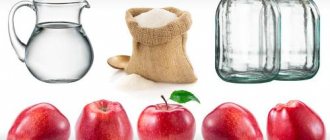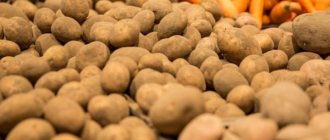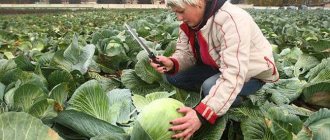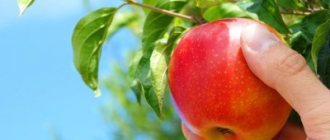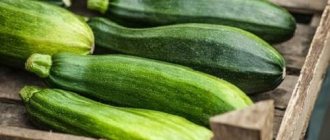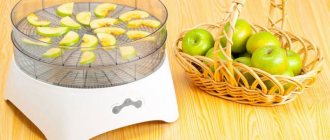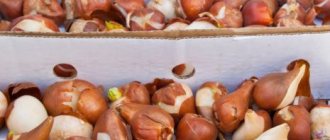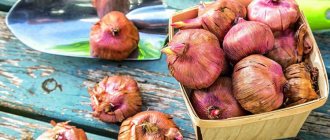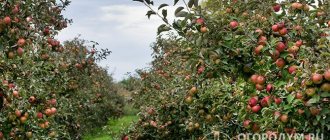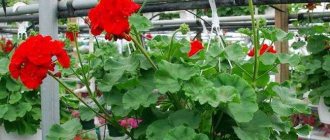When deciding how to store apples on the balcony, it is useful to study the existing experience of storing fruits and vegetables in an apartment during the winter. Storing fruits and vegetables on the balcony has a long history. In the post-war period, not many residents could afford to buy a refrigerator. For a long time this product was a luxury item. At the same time, preparing fruits and vegetables for the winter also has a long tradition. Therefore, the problem of crop storage has always been very acute. For this purpose, sheds and basements in apartment buildings were used. The harvest was stored on the balcony in winter if there was no other option.
Harvesting
The shelf life directly depends on the method by which the crop was harvested. You should not take fruits that have fallen from a tree for storage, nor should you shake the tree so that ripe fruits fall from the upper branches. Apples should be collected exclusively from tree branches, and be extremely careful not to damage the integrity of the peel. For this purpose, it is advisable to wear thin cotton gloves. It is better to get to fruits growing in hard-to-reach places from a stepladder or ladder.
Harvesting should be done in special fruit collection bags, and not in basins or zinc buckets. You can replace the bag with a plastic container, the bottom of which is lined with burlap. If an apple falls during harvest, it is placed in a separate bucket intended for damaged fruits. After all, if you miss even one fruit with rot, it will infect all the apples lying nearby.
"Balcony cellars"
A new surge of interest in options for storing crops in winter appeared with the development of gardening partnerships in the country. The peak of interest came in the 90s, when food in some families depended on the safety of the harvest. It was then that “balcony cellars” became widespread. With a slight difference, they had the same device. These are boxes with double walls, between which insulation was laid, usually polystyrene foam. The source of energy for heating the cellar at subzero temperatures was electricity. Incandescent light bulbs or small air heating elements were used. Homemade thermostats were installed to maintain a constant temperature. The main disadvantage of such cellars was that they were not suitable for storing apples in winter. You can store vegetables in such a container: potatoes, beets, carrots. Keeping apples fresh in winter requires a special approach.
Shelf life of different varieties
Any apple belongs to a certain variety, each of which has its own shelf life. Therefore, before you start harvesting, you should clarify how long and at what temperature this type of apple is stored. The following varieties are suitable for winter harvesting:
- Autumn varieties with thin skin. Fruits can be stored for more than 2 months at a temperature of 0 degrees Celsius.
- Winter varieties with thick and rough skin. They are stored without loss of quality for 4 to 7 months at temperatures from 0 to +5 degrees. The duration depends on the specific variety.
READ MORE: Smoking on the balcony
The peel serves as a kind of protective barrier that prevents the oxidation and drying of the fruit pulp. It also protects the fruit from penetration of pathogenic microorganisms and harmful insects. It is the skin of a certain thickness that protects the delicate pulp from spoilage.
It must be remembered that temperatures below 0 degrees have a detrimental effect on fruits. The maximum permissible temperature is -1 degree. If it is below this value, then the process of spoilage of the harvested apples begins.
Which varieties last the longest?
It is quite difficult to answer the question: which varieties retain their appearance and taste until spring. But gardeners distinguish several species with low moisture content and resistance to sub-zero temperatures.
This article will tell you why apples are useful.
These apples ripen later than others and can sometimes hang on the tree until the cold weather.
There are varieties such as Golden, Jonathan, Simirenko, Antonovka, autumn varieties: McIntosh, Welsey. The fruits are removed from the branches no earlier than the second half of September, but the last specimens can sometimes ripen until the end of October.
Follow the recommended times for harvesting from a specific apple tree. An earlier harvest threatens that the apples will not be sufficiently candied; later, they will lose their freshness and become dry.
Antonovka
Antonovka is a popular variety among gardeners. The trees are easy to care for and, despite the late fruiting, apple trees make up entire orchards in the middle zone. When collecting, they focus on 2 degrees of maturity:
- consumer;
- removable.
In the first case, the apple gained its strength, aroma and juiciness; in the second, the fruit is ready for consumption and storage. If in summer species these 2 components occur simultaneously, then in winter Antonovka the difference in timing is about 1 month. After the fruit is picked, it needs time to arrive.
Apples can be stored for more than 3 months and are well transported, but at the same time, the variety has a number of features. For successful storage, apples should not be shaken off the tree, as this will cause dents and cause rapid rotting. Therefore, for winter installation, Antonovka is removed slightly unripe, and the container is sprayed with antifungal agents and dried.
Antonovka tastes tart, sour, with a small amount of sweetness. For a winter variety, the apples are juicy and flavorful, with green flesh and skin.
Mac
The McIntosh variety was bred in Canada as a winter variety.
At the same time, in Russia and Ukraine, apples are harvested already at the beginning of September, since they do not tolerate night frosts. The fruit is medium in size, slightly conical in shape, tapering towards the bottom. The skin, like many varieties, is smooth and covered with a layer of natural wax, the color of the pulp ranges from white with a yellow tint to green with reddish veins. A distinctive feature of the appearance are purple stripes on a burgundy background.
The taste of McIntosh is sweetish with a candy note, the flesh is quite dense and juicy.
If, when you cut the fruit, the seeds inside are white or light brown, then it is too early to harvest.
Renet Simirenko
Simirenko have a characteristic, asymmetrical shape of a flattened ball. The color of the apple is heterogeneous, from light yellow to intense grassy, with white dots of large diameter scattered across the entire surface.
Simirenko has bulges in the form of warts. This is not a disease, but a feature of appearance.
Read about methods of combating codling moth at this link.
Simirenko's taste is sweet with a pleasant, spicy aftertaste.
Having harvested at the end of September, the storage of fruits can be extended until June, while 90% of the specimens retain their marketable appearance.
Golden
The conical shape of the Golden is known to most gardeners. They are bred mostly in southern latitudes, since apples do not tolerate cold well, even with insulation of the root system.
- The color of apples is yellow, with an ocher or green tint, and has some variegation in the form of brown dots.
- The taste is delicate and sweet, without any acid.
- The size of the fruit varies, reaching a weight of 170 grams.
- The pulp changes from greenish to ocher during storage.
For Golden, it is very important to maintain high humidity in the room, since if there is insufficient moisture, the fruits wrinkle and become insipid.
The variety is planted in lowlands where there is a fairly high percentage of soil moisture.
Read how to store apple tree cuttings for grafting here.
Preparation for storage
To enjoy autumn gifts throughout the winter, you need to follow a few simple rules that will tell you how to keep apples tasty and fresh. Preparation includes sorting fruits according to certain parameters. Thus, apples of different sizes and varieties placed in one container have a shorter shelf life than fruits that have gone through the sorting stage:
- The fruits must be free of dents, visible damage, and scratches. In addition, they should not be wormy. If the fruit does not have a stalk, then the apple is not suitable for long-term storage. It is not recommended to wash apples or remove the natural waxy coating that protects the fruit.
- The division into varieties is of no small importance. Different varieties of apples have different taste and shelf life. In order not to look for a suitable variety in the boxes in winter, you need to distribute the apples in advance into different containers. For convenience, the containers are marked, indicating the name of the variety and the date of placement.
- Sorting by size will help avoid crop spoilage. After all, large fruits during storage are capable of releasing more ethylene than small apples. Under the influence of the gas, small fruits will begin to ripen faster than usual. In addition, large fruits are more susceptible to various diseases and spoilage. An infected fruit can spoil the entire stock of apples.
- You cannot move containers or containers with apples from cold to warm. A sharp change in temperature has a detrimental effect on the fruit.
The sorted harvest is left in a dry, ventilated and cool place for two weeks. Then the fruits are sorted again, discarding rotten fruits and put away for storage.
Is it possible, in what cases?
The first thing you need to remember is that only winter varieties of apples (for example, Calville or Rosemary) are suitable for storage on the balcony. The fruits are distinguished by a thickened skin, covered with an even natural waxy coating.
Subject to certain conditions, winter varieties perfectly preserve:
- taste,
- juiciness,
- aroma for five to eight months after collection.
Autumn varieties do not last long (no more than two months). When harvesting apples of summer varieties, you need to think in advance about how to process them (apples are stored for no more than two weeks).
Only sorted fruits are suitable for storage. The fruits must be whole, without signs of rotting, uniform in color and density. Apples are also sorted by size. Small fruits are sorted for storage in a separate box (they spoil faster).
Find all the most important information about storing apples here.
Storage containers
There are several ways to store apples on a loggia or balcony. The optimal option is selected based on the size of the balcony, its insulation, internal temperature and some other factors. The most common options are the following:
- Shelving. They may have drawers that are easy to open and inspect. Apples in this design are stored in one row, and at some distance from each other.
- Wooden containers. This method is justified with a small storage area. It should be taken into account that fruits located in the upper part of the container will put pressure on the lower layers.
- Cardboard boxes. To prevent them from losing their shape and breaking at the wrong moment, they must be glued with tape.
- Wooden boxes. A simple and convenient storage method, however, is not the most effective. The box must not be overfilled, otherwise the top layer will absorb the previous tier, which will lead to its damage.
- Thermal box This is an ordinary large box, on the bottom of which insulation is laid out in the form of wood shavings, polystyrene foam or old newspapers with rags. Then a smaller cardboard box is placed inside the larger box. The remaining voids are filled with a thick layer of insulating material. Apples in such a container are stored in layers, with each fruit wrapped in paper or a napkin.
READ MORE: What flowers to plant on the balcony and loggia
How to store apples for the winter in the cellar
It is best to store apples in a cellar or cool basement, where optimal temperature and humidity are maintained. Before storing fruit, prepare the room: remove debris, disinfect all surfaces, ventilate well and dry it.
In the cellar, you can use various ways to store apples: simply in boxes, wrapped in paper or sprinkled with dry bulk materials.
You can also store fruits in plastic bags. To do this, make several small cuts in the container to ensure constant air circulation. Place several kilograms of fruit of the same variety in a bag and tie it. Store products at a temperature of ‒1…+1 ℃.
You can store apples in a cellar or basement in thick plastic bags on rack shelves
Some gardeners use a slightly different method of storing apples in bags. The products are placed in containers and left open for a couple of days. After the allotted time, all air is removed as much as possible, the bags are tied and placed on racks in the cellar. After 20 days, a special gas environment is formed in the packaging, which protects the products from spoilage and rotting.
The storage method in plastic bags is not suitable for Antonovka apples. In such conditions, fruits quickly deteriorate and lose their presentation and taste.
Apple processing
There are several ways to process fruits to extend shelf life. However, each of them requires certain time and physical investment. The following methods are considered the most effective:
- A mixture is prepared, including 100 g. propolis tincture and 0.5 liters of alcohol. All components are mixed in a previously prepared container, after which the apples are dipped into the solution one by one and allowed to dry.
- Each fruit is carefully lubricated with glycerin. As soon as the crop dries, they begin laying.
- If you melt paraffin or beeswax, and then dip apples into the mixture and let them dry, then the treated fruit will last for several months without losing its original freshness.
- Storage is affected by a 5% salicylic acid solution. The processed fruits will not spoil or become rotten.
- A bactericidal ultraviolet lamp will help prevent the development of diseases. Apples laid out in layers are irradiated with a lamp for half an hour from a distance of 1.5 meters.
With these simple but effective methods you can preserve your apple harvest until spring.
Necessary conditions for safety
To preserve the taste and benefits of fresh fruits for a long time, certain conditions are created. Particular attention is paid to the container in which the fruits will be stored, the temperature and humidity level in the room, as well as the timing of harvesting:
- The optimal temperature limits for storing the harvested crop are within -3...+4 degrees. With such cool air, apples do not freeze and do not spoil for a long time.
- You can choose wooden or plastic boxes or wicker baskets as containers for storing the harvest. The main thing is that there are many holes around the entire perimeter of the container. Do not store in iron containers.
First, large fruits are placed at the bottom of the selected container; at the very top there should be a row of small apples. By following this rule, it is possible to avoid damage due to the pressure of heavy weight.
Advice. Do not store apples near potatoes. You should not choose straw for storage; it imparts an unpleasant taste and smell to the fruit, and also reduces shelf life.
A properly organized place is the key to a long shelf life of the harvested crop without diseases, pests and rotting.
Sorting
It is advisable to collect fruits that will be sent for winter storage manually. A fruit collector will help you cope with a large amount of harvest. Each picked apple should be inspected from all sides. There should be no dark spots, damage or traces of pests. Such fruits can be dried by first cutting off the damaged part.
Selection of apples for storage involves several stages:
- Inspection of the surface of apples and detection of spoiled specimens.
- Selected fruits are placed in a cool place for 10 days.
- After being in a cool room, a repeat inspection is carried out.
- At this stage, a container for placing the fruit is selected.
Advice. It is not recommended to remove the stem from apples, as it helps to increase the shelf life of the product.
Storage locations
The best place to store crops is a cellar, basement, pantry, attic or balcony. The main thing is to maintain optimal temperature and humidity so that the apples do not freeze or, conversely, rot from the heat. The humidity level in the room where the crop is stored should be maintained at 86-95%.
Treatment
Apples have a waxy layer on their surface that naturally protects them from damage by pests and disease. But some experienced summer residents play it safe and carry out additional processing:
- You can treat it with an alcohol solution based on propolis. 20 g of propolis are diluted in 100 ml of alcohol. The product is first placed in the refrigerator to make it easier to chop using a grater.
- It is recommended to hold the apples for a few seconds in a solution of calcium chloride. Only after this treatment, the fruits are thoroughly washed with warm water and soap before consumption.
- Each fruit is thoroughly lubricated with glycerin. After complete drying, proceed to placing in the prepared container.
- It is useful to dip each fruit in melted paraffin. In this form they will lie for many months, maintaining their juiciness and taste.
See also
Description and characteristics of the Liberty apple tree variety, features of planting and careRead
By spending a little more time and effort on pre-treatment, gardeners will get a good result that will delight all family members and guests all winter long.
Optimal humidity and temperature
It is important to know at what temperature it is possible to preserve all the useful microelements and the taste of the pulp. As already mentioned, the optimal temperature is considered to be 0 degrees. The acceptable lower limits are considered to be -4 degrees, and the upper limits are +4 degrees.
At air temperatures above +4 degrees, the fruits begin to release a special substance in large quantities - ethylene. This causes early damage to the crop. If the temperature is too low, below -2 degrees, the pulp freezes.
The humidity in the room should be high. Ideally, humidity should be between 85-95%. If the fruit becomes limp, a container of water should be brought into the room where the crop is stored.
How many degrees of frost can apples withstand? Winter varieties of apple trees for the Moscow region with photos and descriptions
The variety is frost-resistant, but still not suitable for northern regions.
It bears fruit regularly, apples retain their taste for a long time - about 200 days. However, if the tree has reached 15 years or more, then its shortcomings begin to appear - the fruits become smaller, the volume of the harvest decreases, and the taste of the fruit deteriorates.
The apple tree is resistant to scab, but susceptible to fungal and viral diseases.
- Antonovka vulgare.
A truly popular variety with an easily recognizable “Antonov” aroma and taste. The trees have high winter hardiness and produce a bountiful harvest. It bears fruit for 2–3 years in a row, but has periodic fruiting.
This is a self-sterile variety that requires apple pollinators: Wellsea, Anise, Autumn Striped and Pepin saffron. It has average rates of scab infestation.
A natural semi-dwarf that pollinates well with many varieties. Withstands frosts down to -40 °C, it is resistant to pests and major diseases.
Every year it pleases with a bountiful harvest. The fruits are stored until the beginning of April.
- Moscow Winter is a winter-hardy variety that is resistant to scab.
Gives a bountiful harvest. Large fruits are distinguished by high consumer qualities. The disadvantages include the low early fruiting of the apple tree.
It begins to bear fruit only in the 9th year after seed propagation or in the 6th–7th year after grafting.
A highly winter-hardy variety that produces a bountiful harvest. True, when overloaded with fruits, the apples become smaller. Trees are resistant to scab.
Do apples ripen during storage? What is needed to preserve the harvest?
It is not at all difficult to enjoy the taste and aroma of summer for a long time, as well as regularly supply the body with vitamins, if you take the issue of storage responsibly and take note of a few useful rules.
- Use simple wooden boxes as containers, pre-treated with a solution of potassium permanganate and thoroughly dried in the sun.
- It is better to lay thick paper on the bottom, but you can get by with regular newspapers. Sometimes dry, pre-washed sand is used for these purposes.
- The collected fruits should not be stored outdoors, even for a short time. They must be put into storage immediately after collection.
- If the air humidity in the storage area is high, place containers with fluff lime in it. It will absorb all excess water from the air. In a room that is too dry, you can place buckets or boxes of wet sand. It must be watered periodically throughout the storage period as it dries out.
- Temperature is very important for the correct microclimate. The air should not warm up above +5° C, but even small negative temperatures are also unacceptable.
- Late varieties can be laid out in boxes in several layers, but not too tightly, sprinkled with sawdust, onion peels, peat or other dry and bulk material. It is better to place summer and autumn apples in a low container in one layer, wrapping each fruit in a napkin or sheet of paper.
- It is necessary to regularly sort through the crop, removing diseased specimens that are a source of infection for their neighbors. The first time this should be done a couple of weeks after collection. It is during this period that all defects that you did not discover during cleaning will appear. In the future, the audit can be carried out less frequently, approximately once every 3–4 weeks.
- It would be correct to store different varieties and specimens of different sizes separately, since their shelf life always differs.
